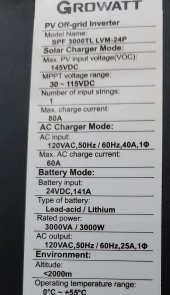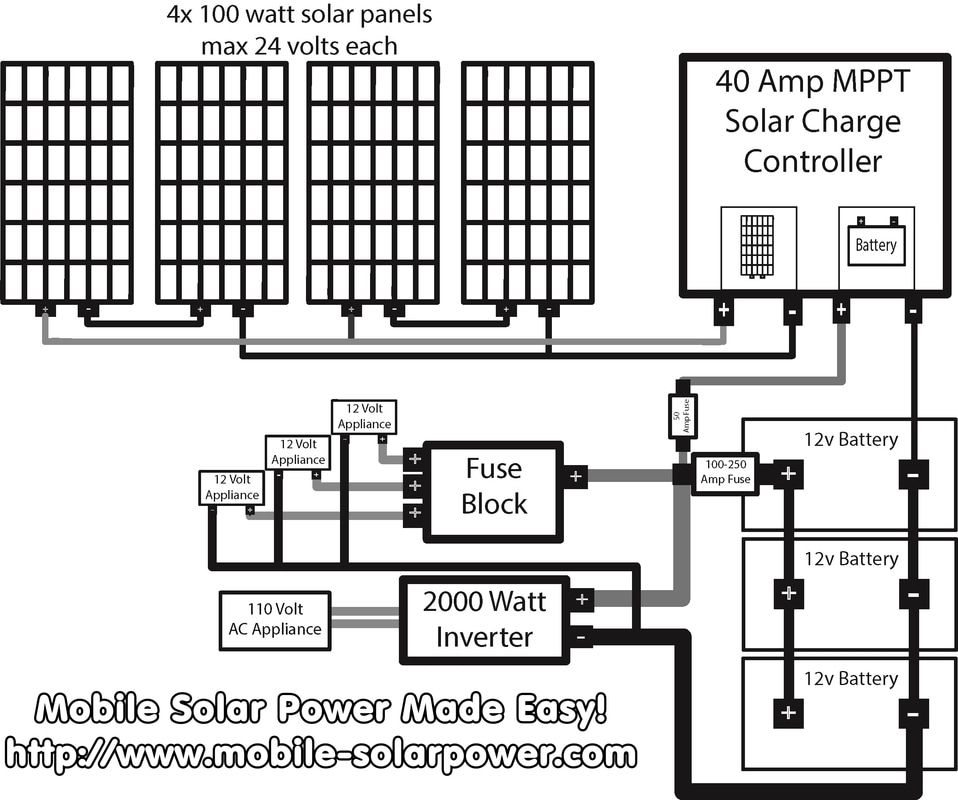I have the following items:
-GroWatt SPF 3000 LVM 24v .
- (2) Renogy 12v AGM 100Ah batteries .
- 250 Amp 32v bolt fuse .
- shutoff switch .
- (2) 100 Watt panels @ 22.4 Voc .
- 2 awg cables connecting everything.
If I hook the panels up in series, on a good day I should have a Voc of 44.8 , am I correct in this thinking???
If I connect the batteries in series, I should benefit from a 24v system @ 100Ah, an I correct in this thinking??
Will this be enough to utilize the GroWatt 3000, 24v, MPPT AIO system?
If not... what can I add or change? I will however, decide later what I'll be running off this setup, but for now, my main concern is whether or not the GroWatt will function properly as inverter and mppt charge controller.??
Also.. in a side note... do I need to invest in a BMS for AGM batteries or are those only for Lithium Phosphate batteries? And if I need one, what might you suggest?
Thanks for any suggestions and advice.
-GroWatt SPF 3000 LVM 24v .
- (2) Renogy 12v AGM 100Ah batteries .
- 250 Amp 32v bolt fuse .
- shutoff switch .
- (2) 100 Watt panels @ 22.4 Voc .
- 2 awg cables connecting everything.
If I hook the panels up in series, on a good day I should have a Voc of 44.8 , am I correct in this thinking???
If I connect the batteries in series, I should benefit from a 24v system @ 100Ah, an I correct in this thinking??
Will this be enough to utilize the GroWatt 3000, 24v, MPPT AIO system?
If not... what can I add or change? I will however, decide later what I'll be running off this setup, but for now, my main concern is whether or not the GroWatt will function properly as inverter and mppt charge controller.??
Also.. in a side note... do I need to invest in a BMS for AGM batteries or are those only for Lithium Phosphate batteries? And if I need one, what might you suggest?
Thanks for any suggestions and advice.






